Why is the last battery cold in a private house. What to do if the batteries in the apartment do not heat well
Maybe the neighbors are to blame?
It may sound corny, but first make sure that you have hot water at home, if the tap is open for it to come in, or the riser is blocked due to plumbing in the basement. Do not be too lazy to go over the neighbors from the upper floors. In the case of unprofessional repairs, one of them will have a radiator temperature that is comfortable, but all tenants will not receive heat from the bottom of the riser, they will be cold.
You have every right to neighborly come up with the question “batteries do not heat up: what to do”, at the same time, and check their heating temperature. If the battery is found to be warmer than yours, then the problem that has arisen may be outlined by simply incorrectly installing the valves at the neighbor. Your further actions taken will be according to the situation, possibly, the shutoff valves, which deprived other neighbors of comfort, will be deleted without scandal. Or call your housing and communal services structure and, with the help of the administration, restore civil justice.
Briefly about the heat supply of an apartment building
If there is courage to figure out why the batteries do not heat well, it will be nice to get acquainted with the basic concepts associated with heating a residential apartment building.
Most high-rise buildings use a single-tube system equipped with U-shaped risers. We show the conditional heat supply scheme of three floors.
Hot water (red color on the diagram) rises one riser and passes, for example, through the bedrooms, to the upper floor, where, looping, it goes down through other rooms (blue color). Such a scheme has been designed since the Soviet era for the use of cast-iron radiators. Hot water enters the lower collector of the radiator and, having passed through all sections, leaves the battery through the upper collector.
A special role was given to jumpers (bypasses). They kept the general forced circulation throughout the U-shaped riser pipe (on the diagram for the six radiators shown), being a safety net for cases of clogging of the radiators with liquid technical mud that accumulates during many years of operation. When the riser passed, some part of the total volume of hot water supplied from the bottom turned to the radiator on one floor, and the rest passed unhindered, delivering heat to the apartments adjacent to the riser.
The appeared aluminum heating radiators are designed based on two-pipe systems with the supply of hot water through the upper collector and its exit from the lower collector. They have a completely different design of the internal cavity, respectively, a different hydraulics. When indiscriminately replaced obsolete cast-iron radiators with modern aluminum, but retaining a one-pipe design, the heat flow from hot water inside the batteries began to weaken due to the mismatching directions of convection heat fluxes from cooling water and hot water pumped by an external pump.
Concerned that the heating battery was not heating up, the residents began to take various technical tricks, not caring at all about the freezing law-abiding neighbors. Such a discrepancy in the types of structures and a decrease in the rate of passage of water through the radiator led to deposits of dirt in the sections. Every year more and more sludge is deposited, and the last battery, which is completely clogged with sludge, is no longer warming. Then this epidemic covers the entire radiator.
So, everything is fine with the neighbors, the riser in the apartment is hotter than the cooled battery. So, the problem is local, the whole thing is in the radiator. An excursion into the basics of heat supply convincingly showed that the main reasons why the last battery does not heat up and causes such a longing for the freezing host will probably be:
- Clogged radiator sections. Due to scale deposits, rust, mineral salts and other impurities settling on the radiator walls, the bore for hot water in the battery is sharply narrowed, the radiator becomes almost impassable for the coolant. Multilayer pollution of the radiator walls has a low heat transfer coefficient, which negatively affects the transfer of heat from the battery to the air in the apartment.
- One pipe heating system. As discussed above, the batteries of this system are doomed to a sort of thermal injustice: distant batteries do not heat up.
- Incorrect connection. Only part of the battery warms, and, for example, the bottom of the battery does not heat.
- An air lock formed by the accumulation of air in the upper part of the radiator. It practically paralyzes the circulation of water and leads to corrosion of steel surfaces.
- Reduced system pressure. Accordingly, less heat enters the living room.
What can be done for a cold battery
Eliminate blockage in the radiator
In this case, rinsing with water under pressure will help. In order to remove the radiator without problems during the heating season, a bypass must be installed. But it is better to resort to the services of a plumber, who with a special chemical composition will clean the radiator capacity from sludge.
Redo single pipe system
Nothing can be changed in the single pipe system itself. It remains only to mount a two-pipe water heating system.
In case of incorrect connection, it is necessary to redo the circuit
It is important! Of the three types of battery connection - bottom, side and diagonal - the most optimal option is the diagonal circuit.
In the event of a connection error, an uneven heating of the sections and their parts is an obvious sign, for example, the lower part of the battery does not heat. The sections closest to the connection point will be warm, the rest almost cold. With a lateral connection for a multi-section radiator, the water will generally not “want” to flow around the entire battery, but will go along the shortest path from the lower pipe to the upper one. Only an experienced plumber will help deal with this confusion.
To correct all connection errors, an injection tube is recommended, which is essentially a duct extension. It is inserted into the battery nut, effectively imitates the diagonal pattern and contributes to the fact that the coolant passes more than 70% of the entire working length of the passage. By increasing the length of the hot water supply, the unevenness of the heating of the battery is corrected, and the heat transfer of the heating system is improved.
In the absence of a normal supply of heat to the riser, it is necessary to “pull out” locksmiths from the housing and communal services structure serving the house. But problems with a low coolant temperature should be in all apartments in a riser, above and below yours.
One of the reasons why the battery does not heat up is the air lock in the radiator. To eliminate it, it is recommended that a special Mayevsky tap screwed in instead of the side cap of the radiator. If there is a need to bleed air from a cooled battery, this can be done independently. To do this, insert a screwdriver into the thread on the tap and slowly turn counterclockwise. As soon as you hear the sound of air escaping with a hiss, the working rotation of the screwdriver must be stopped
It is important! In preparation for opening the tap, you need to clear a place near the battery, because a stream of dirty water can escape with air, which can stain everything around. Place a basin underneath the radiator.
If everything is done according to the instructions, but the battery does not heat up, it means that the radiator is thoroughly clogged. You can’t do without plumbing.
You suddenly began to notice that the battery heats badly, weakly warms the room, does not give off enough heat? There is only one reason for this problem: no hot water enters the radiator in whole or in part. Of course, a qualified master can quickly solve the problem, but is it worth it to immediately sound the bells? Perhaps for starters try to figure it out yourself?
Battery does not heat well
This may seem commonplace, but first of all it is worth checking if there is hot water in the apartment, if the tap for its receipt is locked. Maybe the riser is temporarily blocked due to an emergency or repair situation at one of the neighbors.
There are also frequent situations when the battery in the apartment does not heat up due to the fact that tenants from the top floor incorrectly installed the valve on the radiator. Thus, the temperature in their apartment will be very comfortable, but people living below will be left without heat.
Unfortunately, unprofessionally performed plumbing work often causes cold batteries in neighboring apartments. Keep in mind that you have full civil right to apply to residents on the floor above with a simple question: how are things with the heat in their house? In case of their mistake, housing and communal services will certainly restore justice.
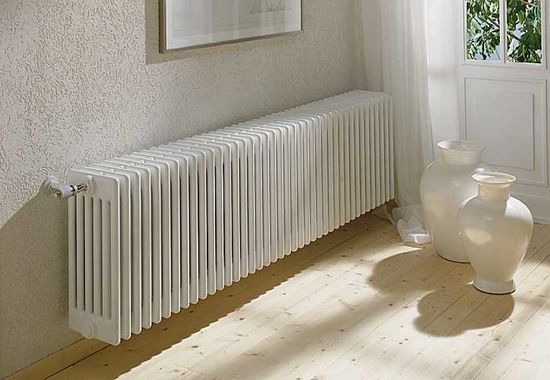
Why the battery does not warm: common causes
If the neighbors are fine, the riser is hot, and it is still cold in your house, then the problem is directly related to the radiator:
- The battery section is clogged. Scale, salts, rust and other impurities tend to be deposited on the inner walls of sections. The coolant passages are drastically narrowed, and under such conditions normal circulation is impossible
- Single pipe system. Such a system has a fundamental drawback: long-distance batteries will be cold, as long as they practically do not heat up
- Airlock. The air accumulated in the upper compartment of the radiator forms a kind of plug that almost completely paralyzes the circulation of the coolant. Also characteristic is the rapid appearance of corrosion in “airy” places.
- Incorrect connection. Often the batteries do not warm precisely because of inept handling when connected. If mistakes are made, only part of the radiator will be active (for example, the bottom)
- Low pressure. If the central heating system has very low pressure, then the circulation of water in the battery is weak. That is, much less heat than expected
Where to go if the batteries are not warm
If you could not solve the problem yourself, you should immediately contact the management company with an application for poor heating. Alternatively, you can call the dispatch service serving the house. But in this case, it is better to record the date of the call and the personal data of the operator. As a rule, a supervisor (or company engineer) should appear on the same day to determine the problem. After making control measurements of the temperature, the technician will draw up an act in two copies (the second for the owners). If the complaints are justified, the problem will be resolved in the near future.
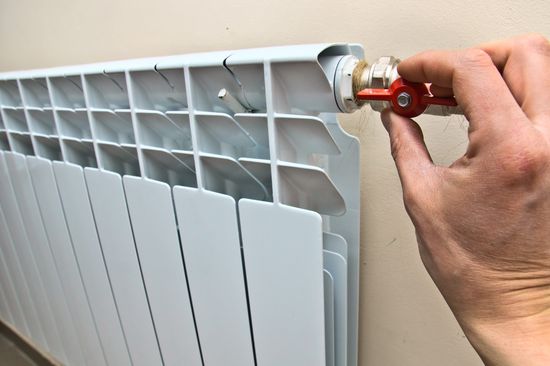
If the cause of the cold in the house really became a faulty radiator, it is worth contacting the housing and communal services. A full-time plumber is obliged to come to you, determine the cause of the breakdown and eliminate it. In the event that neither service provided the proper assistance, there is a hotline. The operator on duty will accept your complaint, explain the situation and tell you where to go next.
Often, residents of multi-storey buildings face a problem when the heating battery stops heating. To start the repair, you first need to find the source of the problem. There may be several reasons, as a result, and methods for eliminating it may also differ.
Air congestion - what to do?
Air congestion in the battery is a common problem. As a rule, air can accumulate in the upper part of the radiator. To eliminate a similar problem in modern heating appliances, a special faucet is used, which has a two-millimeter hole for venting air. It is called the "Mayevsky crane." After turning the crane, a slight hiss will be heard. At the time of water supply, the tap must be closed.
Note! In some cases, it is recommended to keep the faucet open for some time, as air can often come out with water.
However, prudence should be shown here. If you let water out for a long time, then the volume of coolant can significantly decrease in the system. Therefore, it will be effective to bleed air again after a certain period of time.

If the apartment still uses cast-iron batteries, then they do not have a Mayevsky tap. What to do in this case? To do this, use a pipe connection. The process is complicated and unpleasant, since with this option a large volume of coolant will be spilled. When performing this task, you must carefully handle the thread. The thread can be either right or left. When unscrewing the coupling, you should not put much effort, as you can break the thread. Turn the threaded sleeve carefully and smoothly. As soon as the hiss of air is heard, unscrewing the coupling is enough. As soon as water flows, the coupling must be returned in the opposite position.
Note! When tightening the coupling, it is recommended to use a sealant, for example, fum tape or tow. A few turns will be enough and the connection after a while will not flow.
But what if there is no heat in the last radiator? Usually from the last battery the pipe goes to the expansion tank. Then, most likely, a blockage formed in this section of the pipe. Correcting the situation can be time-consuming and difficult work on cleaning the pipe. But first of all, you need to verify this problem or not. Therefore, at first, the pipe passability is checked.
Error connecting
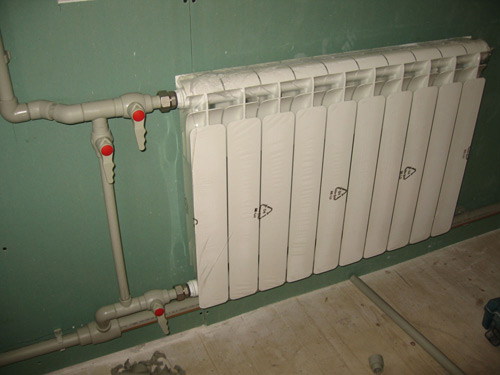
The reason that the radiator does not heat up may be due to errors in the installation of heating equipment.
- Incorrect use of bypass. Bypass is a special adapter that connects the output and flow of the coolant with the pipes of the battery. Its installation is carried out directly in front of the radiator. This is due to the fact that, if necessary, the battery can be easily and quickly dismantled. The reason that the battery does not heat up may be that the bypass is in the open position, as a result, the circulation is incorrect.
- Wrong choice of heating system: two or one pipe. The lack of heat may be in the incorrect calculation of the number of batteries, the diameter of the pipes and the type of heating system. As a result, the coolant energy will simply not be enough.
There are no hopeless situations, therefore, the problems described above can be solved with the help of a qualified specialist.
Does not warm after repair
The battery may not warm up immediately after repair. How to determine the problem? Here, a large role will be played by what exactly has changed in the apartment. For example, pipes can be sutured with drywall. When mounting the profile, the pipe may touch it. As a result, this item will absorb heat, which should be sent to the radiator. That is, heat will spread in the space between the rough wall and the drywall. What to do in this situation? To do this, check at what level the battery warmed up before repair. If after repair it warms weaker, then the cause should be quickly eliminated.
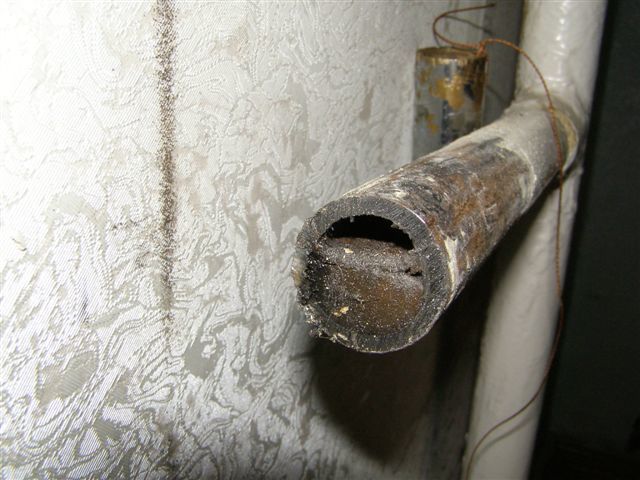
The reason for the insufficient heat of the battery may be clogged. The blockage is explained by the fact that after a long period of operation of the heating, the inner diameter of the pipes could be significantly reduced due to the appearance of rust. As a result, it may turn out that there is no place in the pipe for the circulation of the coolant flow. In such cases, the battery will need to be cleaned or completely replaced. To clean or replace the radiator, shut off the coolant supply on the bypass. In this case, the entire system will continue to work. If you can get along only with cleaning, then you can use the following tips:
- It is important to remember safety, since the coolant can be very hot.
- Cleaning should only be carried out under high water pressure.
- Before reassembling the radiator, you should check the pipe connections; there may also be a blockage at the junction that can be cleaned.
- It is recommended to clean radiators all at once.
Possible other reasons
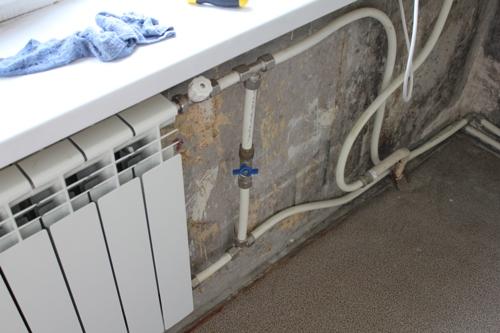
Each individual case when the heating equipment is not warm is unique. Sometimes the reason can be very commonplace. If central heating is used, it is possible that the heating was temporarily turned off. In this case, taking any action is useless. You just need to wait until the problem is fixed in the boiler room.
If the last radiator does not heat, then most likely, heat does not reach it. Accordingly, it is necessary to review the efficiency and circulation capacity of the coolant in the heating system. In this case, it is necessary to check the pump, as it may not cope with the load.
Other problems can be solved by the expansion tank. How? If there is a problem with air supply, then the heat transfer medium can be driven off by the pump throughout the system. To do this, during the installation of all heating, you can make a special valve on which the fitting is installed. A hose is put on it and water is supplied. After this, it is necessary to wait until the water presses out air through the expansion tank.
Note! This method is very risky. Water can fill the expansion tank. Therefore, you can’t do without a partner here. One will start the water, and the second will check the water level in the tank.
After carrying out all these actions, the system can warm up again.
The case of the master is afraid!
So, as you can see, the heating system can be fraught with a large number of tricks and tricks. It is not always possible to immediately find out what to do. If you never had to understand the problem of why the radiator is not warming up, then most likely it will be useful to watch a useful video that will tell you about one method for troubleshooting. In this case, it will be possible to solve the problem independently and without involving specialists.
